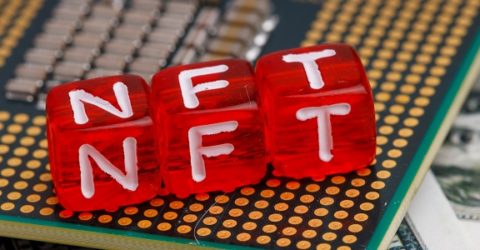Are NFTs just a con, or is there more to it?
We explain what are NFTs, how they’ve risen to prominence, and why they're a risky investment.

In recent months, the mainstream media has been full of stories about non-fungible tokens.
Even as the cryptocurrencies used to purchase them have collapsed in value, NFTs remain a hot topic among investors, speculators and people wanting to be part of the next digital gold rush.
So what are NFTs, and how do they work? Do they really have any inherent value, or are they little more than a glorified scam?
Chip off the old blockchain
It’s very difficult to describe NFTs without immersing ourselves in technical jargon, but we’ll do our best to keep things simple.
In 2009, Bitcoin introduced the world to the concept of a digital currency with no value beyond whatever people were willing to pay for it.
Thousands of cryptocurrencies have subsequently followed in Bitcoin’s wake.
Instead of being exchanged in the traditional way, with receipts and invoices being generated, every cryptocurrency transaction is recorded on a digital ledger known as the blockchain.
This can’t be retrospectively overwritten or altered. It’s a permanent (and constantly expanding) record of who owns what.
Being able to irrefutably prove who owns something on a public ledger has lots of potential benefits. And it’s become the cornerstone of NFT ownership.
A fungi to be around
If something is fungible, it can be replaced by another item. You could exchange a thousand pounds for currencies, crops or commodities, and the value exchange should be roughly equal.
A non-fungible item has a unique value, such as a signed football shirt or a piece of land. You can only base its valuations on other items which are broadly similar.
A non-fungible token indicates ownership of digital data, like a piece of digital art. If you purchase the NFT, you become the owner of that commodity – to a limited extent.
You might not be able to stop other people viewing, sharing or copying your purchase. You rarely obtain the copyright or reproduction rights, which tend to remain with its creator.
What you receive is a token with a unique digital signature that’s recorded in the blockchain, demonstrating ownership.
Think of it as adding a plaque below a painting in a gallery. Everyone else can still view and photograph the painting, which remains in the gallery, but your name is associated with it.
You’ll need a digital wallet to store your NFT, as you would with cryptocurrencies, and fees will be deducted through whichever exchange you make your purchase or sale through.
What are NFTs’ long-term prospects?
Like many aspects of the decentralised world, it’s hard to say at this early stage whether NFTs are a con trick or the future of digital ownership.
Sales have plummeted since that brief, frenetic period when the token for a picture by artist Mike Winklemann attracted a bid of $69 million at Christie’s.
In a rising stock market, investors may be willing to take a punt on buying NFTs in the hope their value increases, though current economic headwinds may preclude that for a while.
Unfortunately, the phrase ‘a fool and his money are soon parted’ has been enthusiastically embraced by an army of scammers, spammers and plagiarists.
If you genuinely want to own the digital rights to an X-ray of William Shatner’s teeth, knock yourself out.
Just don’t be surprised if you end up owning a digital token nobody else wants, for an item everybody else can already freely view.






